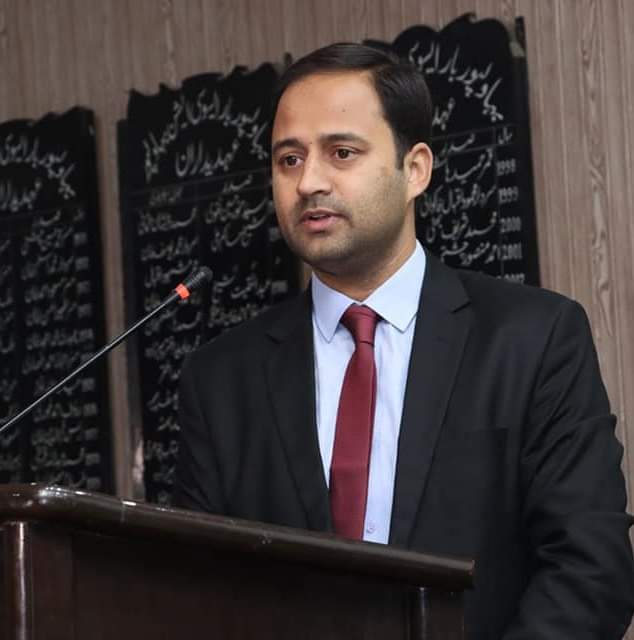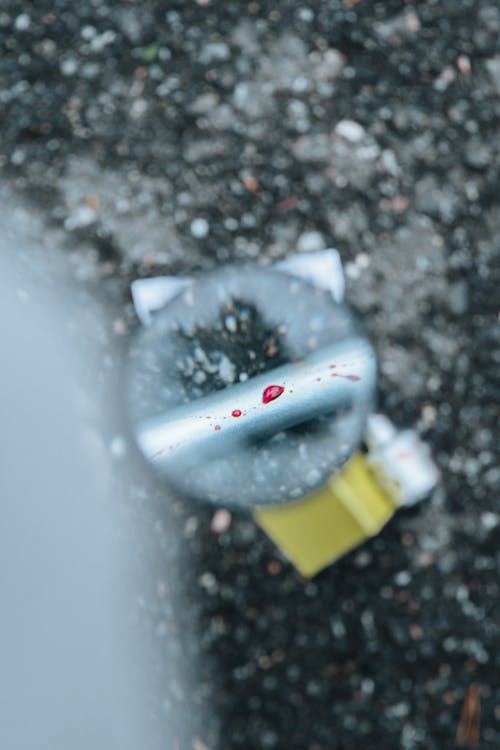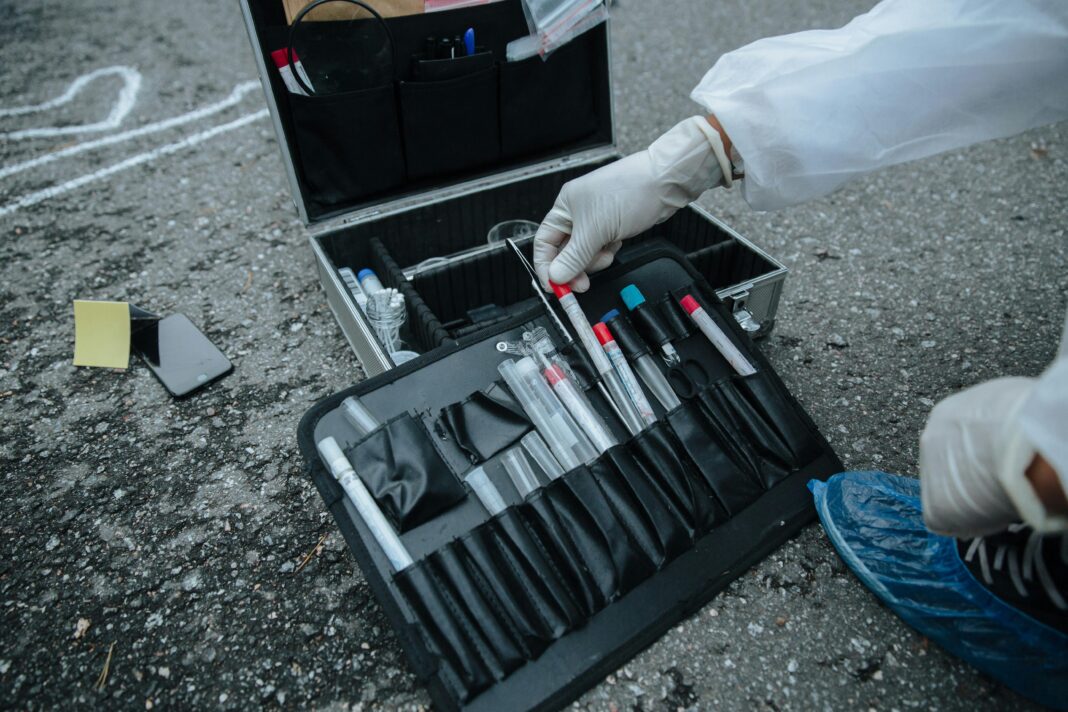You may have heard of Sherlock Holmes. If you don’t know, he is a detective who solves mysterious criminal cases by using exceptional deductive reasoning, observational skills, and scientific knowledge to analyze evidence. Such intellectual characters also exist in real life.
A proud forensic scientist, Dr. Shahid Nazir Paracha, has dedicated more than a decade to advancing forensic science in Pakistan. He has experience in both field investigations and laboratory analysis. Dr. Shahid has contributed to solving cases like homicide, rape, terrorism, personal identifications, etc. He also trained many professionals, leaving an ingrained mark on the forensic landscape of Pakistan.
Dr. Shahid is currently associated with the Department of Forensic Medicine, University of Health Sciences (UHS), Lahore. He is an adjunct faculty member at the Punjab University Law College. He is a special Editor of forensic science and criminology in the Journal of Basic & Clinical Medical Sciences. Before joining UHS, he served the Punjab Forensic Science Agency (PFSA) as a forensic scientist. Dr. Shahid’s expertise outspreads conventional forensics. In the book “Modeling and Simulation of Functional Nanomaterials for Forensic Investigation”, published in 2023, he discovers the use of nanotechnology in enhancing forensic precision and efficiency.

In an insightful conversation, Dr. Shahid discussed his journey to forensic science, integrating forensic science and nanotechnology, and Pakistan’s position in adopting these changes. Here are some snippets from our engaging conversation.
Hifz: Thank you for sparing time from your hectic schedule. We will start with your journey, what inspired you to delve into the world of forensic science?
Dr. Shahid: This is quite tricky, and I came to this field accidentally. In 2011, we were the first and pioneer batch of MPhil Forensic Science in Pakistan. Before this, separate subjects were available, like Forensic DNA and Forensic Chemistry.
At that time PFSA was in the pre-operational phase and former Director General Dr. Muhammad Ashraf Tahir, an expert in this field came from the USA to establish PFSA in Lahore. With their help, the University of Veterinary and Animal Sciences (UVAS) Lahore, plans the first-ever program in Pakistan’s history in the forensic sciences.
Luckily, Dr. Ashraf Tahir supervised me for my MPhil project. Soon, after completing my MPhil, I got a job here at PFSA, and definitely, as we delve into real cases, I understand the strength of forensic science. I went to practical and perspective forensics or you can say that for the fascination of forensics, this is the science for justice. We perform hundreds of cases and are satisfied that with our help someone is getting justice.
In the meantime, along with the job, I continued my PhD in Forensic Science and was the first batch of PhD Forensic Science at UHS in 2015. I joined UHS as a full-time employee in 2017. I have been honored and privileged and this is all dedicated to my supervisors, and teachers who guided me this far.

Hifz: As you mentioned forensic science in Pakistan is traced back to 2011, and you are one of the country’s early forensic experts. What exactly is forensic science? What is Pakistan’s current position in the forensic world?
Dr. Shahid: Forensic science is a multidisciplinary field that applies scientific methods and principles to investigate crimes and provide evidence for legal proceedings. It involves the analysis of physical evidence such as DNA, fingerprints, bloodstains, firearms, and digital evidence, to reconstruct events and link suspects to crime. There are many subdisciplines Forensic Genetics, Forensic Toxicology, Forensic Chemistry, Digital Forensics, Crime Scene Investigations, and Ballistics.

Pakistan’s law and order and justice conditions are unstable, having said that forensic science is crucial for ensuring justice, maintaining law and order, and reducing crimes in Pakistan.
To counter terrorism and crime control, forensic science is vital. It has the most advanced techniques for solving terrorism cases which without forensic science is not possible. To increase the efficacy of our judicial system in 10-12 years, there is a much need for every crime to have a forensic report.
With the help of forensic science homicide, sexual assault, and drug trafficking cases are being solved. It’s definitely of international standard as we have the privilege that at the PFSA which is a world-renowned and Asia’s biggest lab, where forensic methods are implemented with the standard protocol.
We claim that a report issued here by the PFSA Laboratory cannot be challenged anywhere in the world. Human rights are always neglected in Pakistan, a lot of our people are underprivileged. In the sexual assault cases like Zainab’s murder and there are many examples like this, if there is no forensic DNA technology, it is not possible for law enforcement agencies to reach the suspect and to encounter them.
The challenge is limited financial resources advanced technologies, and, a lack of skilled persons or experts. I already quoted the example that there are only 3-4 PhDs in pure forensic science in Pakistan, causing a technological gap.
Hifz: In recent times, you co-authored a book “Modeling and Simulation of Functional Nanomaterials for Forensic Investigation”. For those unfamiliar with the concept, how would you define nanotechnology and its significance in forensic science?
Dr. Shahid: Nanotechnology is the manipulation and application of material at the nanoscale level, typically between 1-100 nanometers. At this scale, materials exhibit unique physical, chemical, and biological properties. Nanotechnology is not a very advanced field or has a current past. In different fields, nanotechnology is being used like in chemistry.
With the help of nanomaterials, nanocomposites, or nanoparticles, materials are used to delve into the nanoscale typically 1-100 nanometers. We adopted nanomaterials that can be utilized and helpful in forensics.
For example, for fingerprint detection nanoparticle powders, normally we use simple dust or black powder which are magnetic-based or chemical-based. Nanoparticles like gold, silver, and zinc oxide enhance the visibility of latent prints and they are definitely environment friendly‑ they have very high sensitivity and specific results.

In the DNA analysis, we use an expensive method for the STR analysis. Research is going on DNA analysis and how to obtain purified DNA from small and degraded samples more effectively than traditional methods, with the help of nanomaterials. Nanotechnology applies to drugs, toxins, biological evidence, trace evidence, explosives, and fire debris analysis as well.
The advantages of nanoparticles in forensics are that they are highly sensitive and specific. They provide rapid analysis with rapid test kits which are portable and can bring to the crime scene.
We don’t have a method to collect DNA and run Polymerase Chain Reaction (PCR) at the crime scene, but with the help of nanoparticles, portable devices will be available in the future. It enhances accuracy in the results and reduces the risk of contamination and false positives.
Hifz: A couple of weeks ago, I reviewed the literature regarding Chemical Terrorism and the Role of forensic science. In incidents of terrorism, detecting explosives in an open environment. Could you explain how nano-sensors enhance sensitivity and accuracy in this domain?
Dr. Shahid: Nanomaterials have revolutionized explosive detection by offering unparalleled sensitivity, specificity, and speed in identifying explosive compounds. Their unique property such as high surface area, and conductivity, makes them ideal for detecting trace amounts of explosives in complex environments like humid environments, or any other environment.
Nanomaterials can be used in explosives detection. Explosives release Volatile Organic Compounds (VOCs) that can interact with nanomaterials causing measurable changes in electrical, mechanical, and optical properties in the forms of color, electric, and magnetic current change.
Nanostructures or sensors are metal oxide particles, they are carbon nanotubes (CNTs), and graphene-based sensors. These are sensors and tubes available to detect changes in the organic compound when interacting with nanoparticles. The release of compounds causes measurable changes in electrical, mechanical, and optical properties.
Several types of nanoparticles involved in the detection include quantum dots, and metallic organic frameworks (MOF). They emit fluorescence when they react with the different types of explosive vapors in humid or other environments.
Nanoparticles or nanosensors for field detection use portable devices. Nanotechnology on-site detection lab-on-chip device, is our project and I can share that lab-on-chip are different types of chips coded with different types of quantum dots and nanomaterials. We can bring them to crime scenes and detect explosives rapidly in the field.
As far as chemical terrorism is concerned, nanosensors enhance sensitivity to the high surface-to-volume ratio and enhance electric properties. They have tailored functions and quantum effects with different surfaces. They have improved accuracy compared to the other chemical methods that can change color and detect the presence of explosive materials.
Nanosensors are designed to target specific molecules significantly for explosives. They have integrated with pattern recognition systems and environment-inhibited ability with rapid signal response. But if the environment is rough like in rain or moisture, the chemical method may have some problems but with nanomaterials, this is the most accurate and sensitive detection of trace explosives.
Hifz: Biological molecules and body fluids, these molecules and particles are very sensitive and present in trace amounts at the crime scene. Crime scene investigators usually take very much precaution while lifting them from the crime scene due to the fear of contamination. So how can we employ nanomaterials in detecting biological materials like DNA? Is it possible to use similar approaches for body fluids?
Dr. Shahid: Nanomaterials have shown tremendous potential in the detection of biological materials such as DNA and body fluids due to their unique properties including high surface area, and biocompatibility to functionalize for specific molecular interactions. They enable highly sensitive, rapid, and specific detection techniques. Which are particularly available in forensic science, medical diagnosis, and environmental monitoring.

Currently, we use different chemical methods based on strips and color change methods or chromatographic techniques with their limit and challenges. Nanoparticles can interact with DNA through various mechanisms like adsorption, and hybridization. This interaction is used to detect, quantify, and analyze DNA Sequence.
The approaches we use for nanoparticle detection are based on some costly methods. These are gold nanomaterials functionalized with complementary DNA probes and their optical property with hybridization occur for the calorimetric detection of DNA sequences. Graphite and Graphene Oxide have a strong affinity for single-stranded DNA (ssDNA).
Body Fluids like blood, semen, and saliva interact with specific biomarkers or chemical components. There are calorimetric and fluorescence sensors, surface-enhanced Raman Spectroscopy, which is the major technique in nanoparticles, graphite sensors, magnetic nanoparticles, and nanostructure biosensors. These are all for biological detection.
We use nanoparticles for biological detection for a speedy result. Which are portable and multiplexing. They can be used for enhanced stimulus detection of multiple targets such as the detection of different DNA sequences. There are some challenges like the high costs of gold nanoparticles but due to their stability and standardization, scientists are working to reduce their high cost.
Hifz: What are the most promising advancements in nanotechnology that will revolutionize forensic science?
Dr. Shahid: Definitely, Hifz, Nanotechnology is paving the way for groundbreaking advancement in forensic science by offering innovative tools and techniques that improve sensitivity. The advanced nana sensors are impactful and different types of portable surface-enhanced Raman spectroscopy devices, are internationally available worldwide.
For the enhancement of DNA analysis, magnetic nanoparticles are available for the isolation and purification of the complex samples, they obtain high-quality DNA. Gold nanoparticles are also an example. Nanoparticles for latent fingerprints are quantum dots, and metallic nanoparticles like gold, silver, magnesium, and other particles to enhance the fingerprints compared to the powder technique. They have a different impact and reveal fingerprints under UV light with high clarity; and nanoparticle luminescence.
For the body fluids like blood, semen, and saliva, there are biomarkers and advanced techniques available, like Lab-On-Chip. This is a different nanomaterial or nanosensor fitted on a simple, small chip, that is used on crime scenes for analysis. For drugs and toxins detection different types of nanoaerosol functionalized with molecular printed polymer to capacity and identify a specific substance are available.
Nanotechnology in crime scene reconstruction enhances the microscopic evidence nanotechnology. Nanoparticles for 3D imaging and mapping are also available. For microscopic trace evidence like Gunshot Residue (GSR), we can analyze GSR on a Scanning Electron Microscope (SEM). Fiber and Glass fragment analysis can be done by using nanotechnology.
Similarly, in forensic toxicology, nanomaterials improved the detection and quantification of toxic substances in biological samples especially. Nano Lab-on-Chip systems are being used for analyzing the blood, urine, and tissue samples. This is the faster and more accurate toxicological analysis and a cheap method as compared to High-Performance Liquid Chromatography (HPLC).
Hifz: Do you have any final thoughts or a message for young researchers aspiring to excel in this field?
Dr. Shahid: I think your batch is 1st undergraduate batch in Pakistan. In youngsters like you and your fellows, there is very much the craze of joining forensic science.
Forensic science is a multidisciplinary field, the undergraduate curriculum, courses are from physical, biological, and chemical science. I recommend a person who has an interest in a multidisciplinary field, can stay curious and resilient, he can adopt forensic science. Every piece of evidence tells a story— a jigsaw puzzle, and as forensic scientists, we work hard to solve the puzzle, complete the story, and reach the suspect.
Forensic science is all about ethics, this is not a common science where any mistake leads us to a simple report change. Here any mistake, corruption, or unethical practice leads to someone’s death. We must practice truth and ethical standards in forensic science.
Also Read: The Fundamentals and Applications of the Blockchain World with Boone Bergsma


